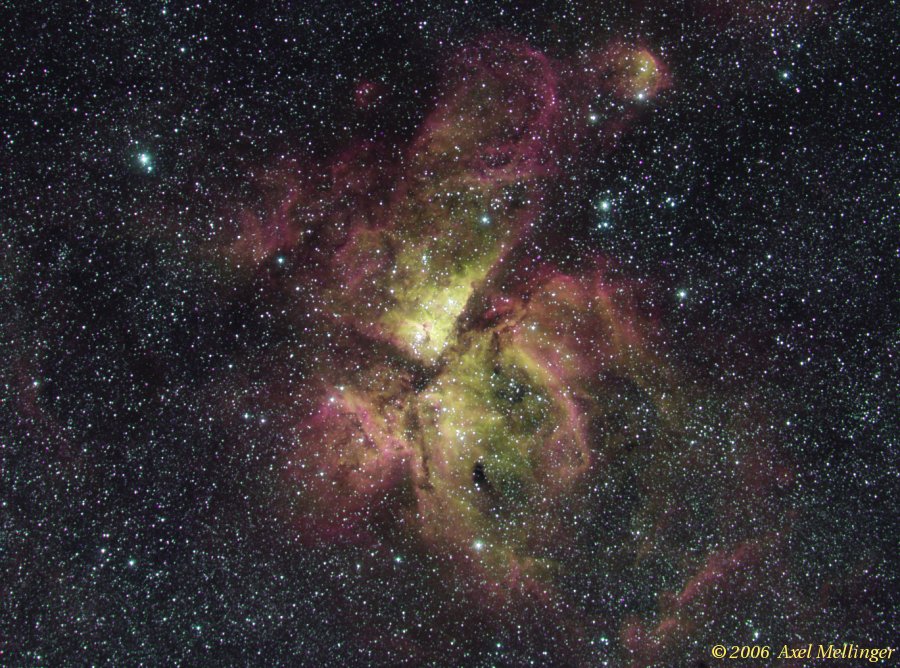Eta Carinae Nebula

This image is a false-color composite made through narrow-band filters at the wavelengths of [S-II] (671.9 and 673.0 nm), Hα (656.3 nm) and [O-III] (495.9 and 500.7 nm). Both the S-II and Hα wavelengths are red, while [O-III] appears green. Thus, assigning these images to the RGB color channels is completely arbitrary. One choice, used in the famous "Pillars of Creation" image by the Hubble Space Telescope is in order of decreasing wavelength, i.e. [S-II] → R, Hα → G, [O-III] → B, also known as "SHO" mapping. Due to its strong Hα emission, the nebula appears predominantly green. A more natural view is obtained with the "HOS" color mapping, i.e. Hα → R, [O-III] → G, [S-II] → B. The strong Hα and [O-III] emissions are both assigned to their correct color; the weaker [S-II] is responsible for the magenta cast of the outer parts of the Eta Carinae nebula. |
| Camera | : | Starlight Xpress SXV-H9 |
| Lens | : | Minolta 2.8/135 mm, stopped down to f/4 |
| Filter | : | Astronomik Ha, O-III and S-II |
| Mount | : | Vixen Super Polaris DX |
| Guiding | : | SBIG ST-4 autoguider |
| Date | : | 04 March 2006 |
| Exposure | : | 4x10 min per color channel |
| Site | : | Koornlandskloof Guest Farm |
| Processing | : | Bias, dark frame, flat field correction, registration and digital development: IRAF, post-processing: Gimp |
 Back to image gallery
Back to image gallery
